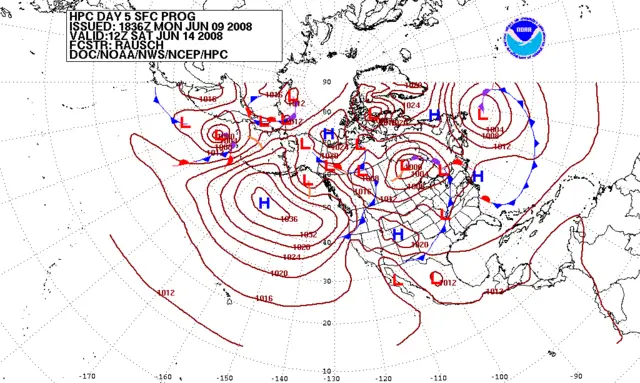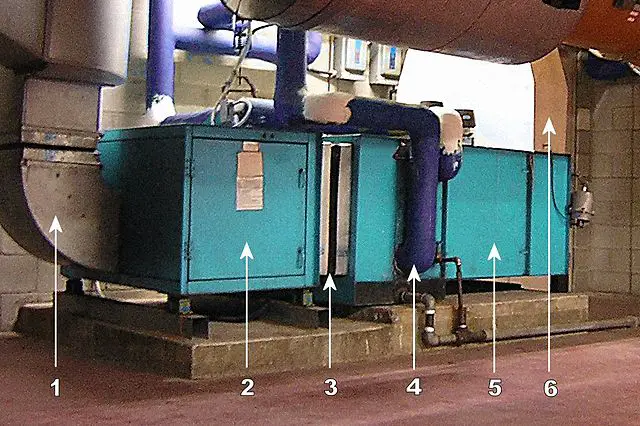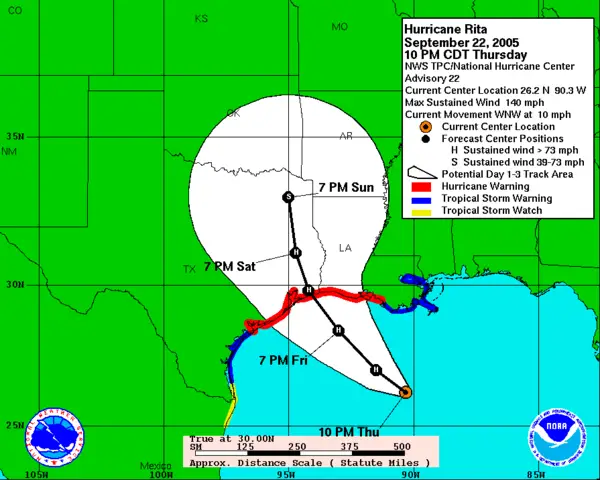What is weather forecasting?
Weather forecasting the predicting the weather, based not on guesswork, but on scientific study of the changes in Earth’s atmosphere.
Meteorology is the name for this field of science that focuses on the atmosphere. The people who appear on news stations to tell audiences about the upcoming weather patterns are meteorologists.

How does meteorology work?
Meteorology is a very difficult science, because there are a lot of different changing factors that go into the weather. Therefore, weather predictions are not always perfect.
The job of a meteorologist includes the measurement and study of different changes of the Earth’s atmosphere to determine what weather patterns will result. The primary focus of these measurements are the movement of the low and high pressure systems.
High and low pressure systems
Wind is formed by the changes in air pressure in certain regions of the atmosphere. These patterns of change are known as pressure systems, and they can have high amounts of pressure or low amounts. The boundary areas that separate high and low pressure systems are called fronts.
When a meteorologist tells you that there is a high pressure system, that usually means that there will be nice, pleasant weather without rain or extreme temperatures.
When a meteorologist says that there is a low pressure system, that will usually include poor weather, rain, clouds, or even storms. This is because low pressure systems have air that is more warm and more full of water vapor than high pressure systems.
Phrases that meteorologists use often include cold fronts and warm fronts. Cold fronts are the replacement of warm air systems with cold air systems. Cold fronts can often bring storms with them.
Warm fronts are the replacement of cold air systems with warm air systems. Warm fronts can often bring some light rain and possible cloud covers with them.

How do meteorologists study the weather?
There are many different pieces of highly technological equipment that are involved in measuring air pressure and collecting data to predict the weather. Some of these include Doppler radar, satellites, rain gauges, anemometers, and barometers.
Doppler radar is a specific type of radar that measures precipitation (whether it’s in the form of rain, snow, or hail), in addition to the speed and direction of the wind. Satellites are useful for examining very large patterns and formations of clouds over the Earth’s atmosphere.
Rain gauges measure how much rain a region has gotten, in inches. Anemometers measure wind speed, and barometers measure the pressure in the air and changes in this pressure, which can inform meteorologists about possible bad weather.

Additional information about weather forecasting
Another important weather-related factor that is discussed in weather reports is humidity. This is the measurement of how much water vapor there is in the air on a given day. Humidity is reported in a percentage.
Low pressure air systems have very high humidity, and high pressure air systems have very low humidity.
Dew point is another term used in meteorology, and it refers to the temperature at which water begins condensing in the air.
Questions:
- What is weather forecasting?
- What is meteorology?
- What is the primary focus of meteorology measurements?
- What are weather fronts?
- What does Doppler radar measure?
Answers:
- Weather forecasting the predicting the weather, based on scientific study of the changes in Earth’s atmosphere.
- Meteorology is the name for this field of science that focuses on the atmosphere.
- The primary focus of these measurements are the movement of the low and high pressure systems.
- The boundary areas that separate high and low pressure systems are called fronts.
- Doppler radar measures precipitation and the speed and direction of the wind.